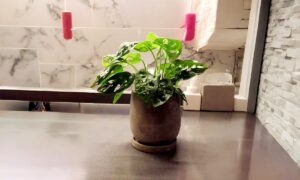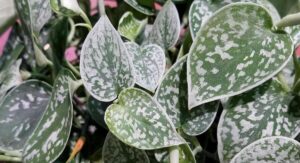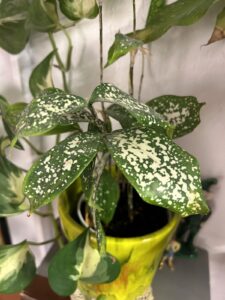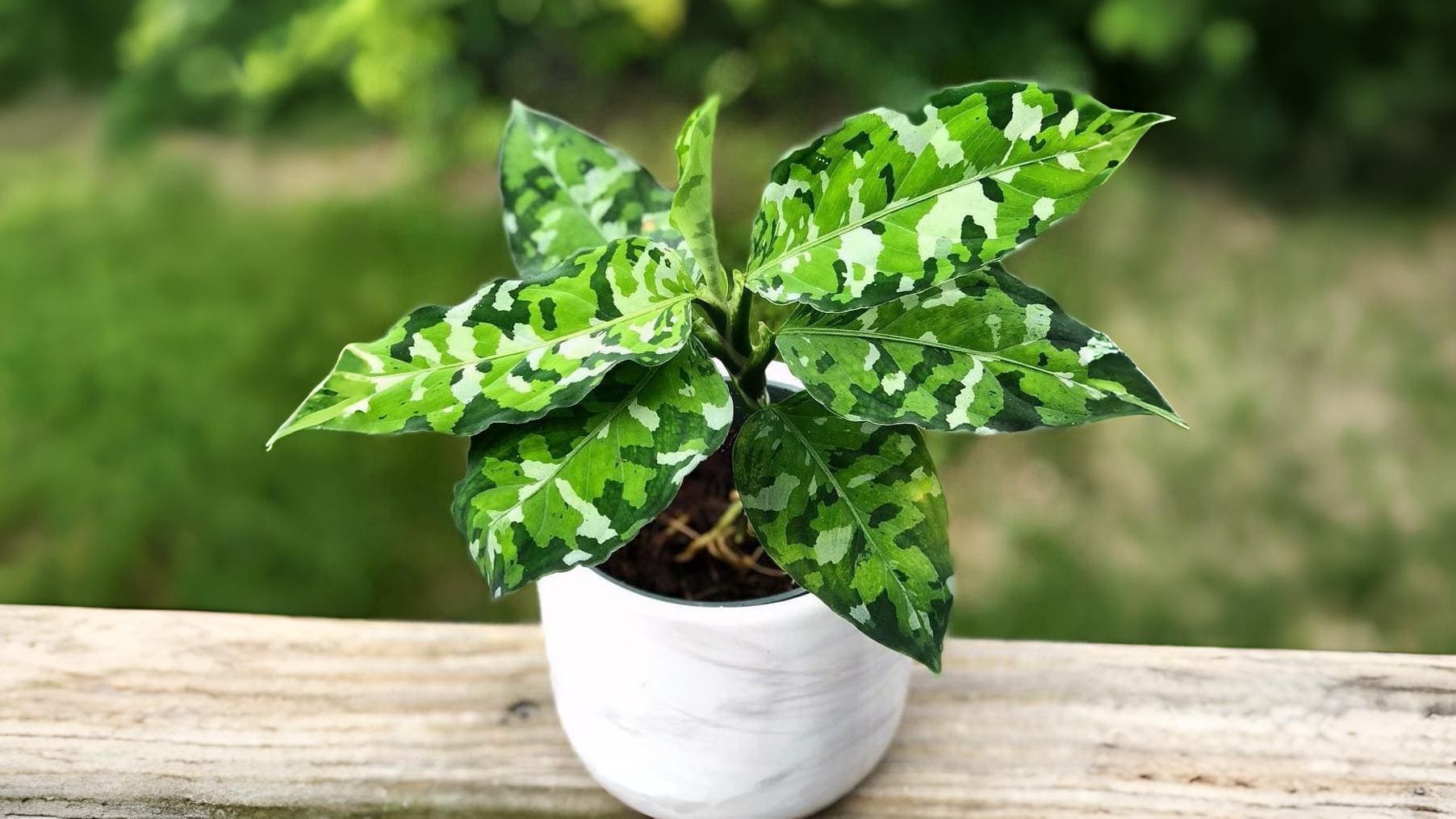
Aglaonema Pictum ‘Tricolor’ is a stunning houseplant that captivates with its unique variegated leaves showcasing a beautiful mix of green, silver, and creamy white. Native to the tropical rainforests of Southeast Asia, this hardy perennial thrives in indoor environments, making it a popular choice for both novice and experienced gardeners. With its low-maintenance needs and striking appearance, it’s an excellent addition to any home decor.
| Common Name | Chinese Evergreen |
|---|---|
| Botanical Name | Aglaonema Pictum ‘Tricolor’ |
| Family | Araceae |
| Plant Type | Perennial |
| Mature Size | 1-3 feet tall |
| Sun Exposure | Low to medium light |
| Soil Type | Well-drained potting mix |
| Soil pH | Acidic to neutral |
| Bloom Time | Rarely blooms indoors |
| Flower Color | White |
| Hardiness Zones | 10-11 (USDA) |
| Native Area | Southeast Asia |
| Toxicity | Mildly toxic to pets |
In this article
Aglaonema Pictum ‘Tricolor’ Care
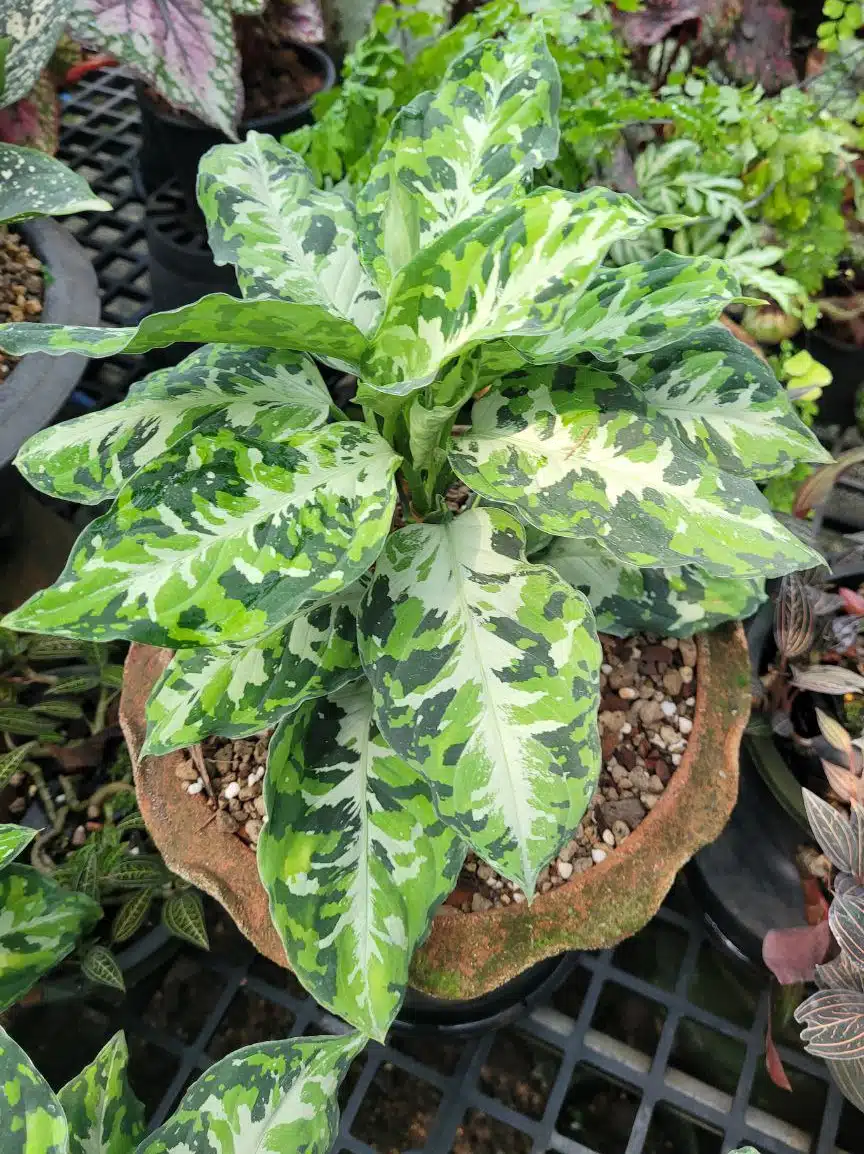
Aglaonema Pictum ‘Tricolor’ is known for its resilience and adaptability. It doesn’t require much fuss, making it an ideal choice for busy lifestyles. Regular watering, proper lighting, and occasional feeding will ensure your plant looks its best.
Light
This plant prefers low to medium indirect light, making it perfect for shadier spots in your home or office. Avoid direct sunlight, as it can scorch the leaves and diminish their vibrant colors.
Water
Water your Aglaonema when the top inch of the soil feels dry. Overwatering can lead to root rot, so ensure the pot has good drainage. In the winter months, cut back on watering, allowing the plant to rest.
Soil
A well-draining potting mix is essential for Aglaonema Pictum ‘Tricolor’. A blend designed for houseplants or an aroid mix works well. Aim for a slightly acidic to neutral pH for optimal growth.
Temperature and Humidity
Aglaonema thrives in temperatures between 65°F to 80°F. It prefers higher humidity levels, so consider placing it in more humid areas of your home, such as kitchens or bathrooms, or using a humidity tray.
Fertilizer
Feed your plant with a balanced liquid fertilizer every 4-6 weeks during the growing season (spring and summer). Reduce feeding in fall and winter when growth slows.
Pruning
Regularly remove any yellow or dead leaves to promote better air circulation and overall plant health. Pruning helps maintain a tidy appearance and encourages new growth.
Propagating Aglaonema Pictum ‘Tricolor’
Propagation is best achieved through division. When repotting, carefully separate the plant into smaller sections, ensuring each division has roots and leaves. Replant in new pots with fresh soil.
RELATED: Thai Con Aglaonema Care Made Easy
Potting and Repotting
Choose a pot with drainage holes to prevent excess moisture. Repot every couple of years or when the roots become crowded. Use fresh potting mix during repotting to provide nutrients.
Overwintering
Aglaonema Pictum can be kept indoors during winter, ensuring it remains in a warm, well-lit area. Avoid cold drafts and water less frequently to accommodate for the lower light levels.
Common Pests and Plant Diseases
Watch for pests such as spider mites, mealybugs, and aphids. If detected, treat with insecticidal soap or neem oil. Root rot is a common issue related to overwatering, so always check soil moisture before watering.
Common Problems with Aglaonema Pictum ‘Tricolor’
If leaves start to yellow or drop, it may be a sign of overwatering or insufficient light. Adjust your care routine to remedy these issues.
Frequently asked questions
Is Aglaonema Pictum ‘Tricolor’ pet-friendly?
While mildly toxic, it’s generally not harmful in small amounts, but it’s best to keep it out of reach of pets.
How often should I water my Aglaonema?
Water when the top inch of soil feels dry, typically every 1-2 weeks depending on humidity and light conditions.
Does Aglaonema bloom indoors?
It rarely blooms indoors, focusing its energy on foliage growth instead.
YOU MAY ALSO LIKE: 7 Stunning Variegated Houseplants to Brighten Your Home

